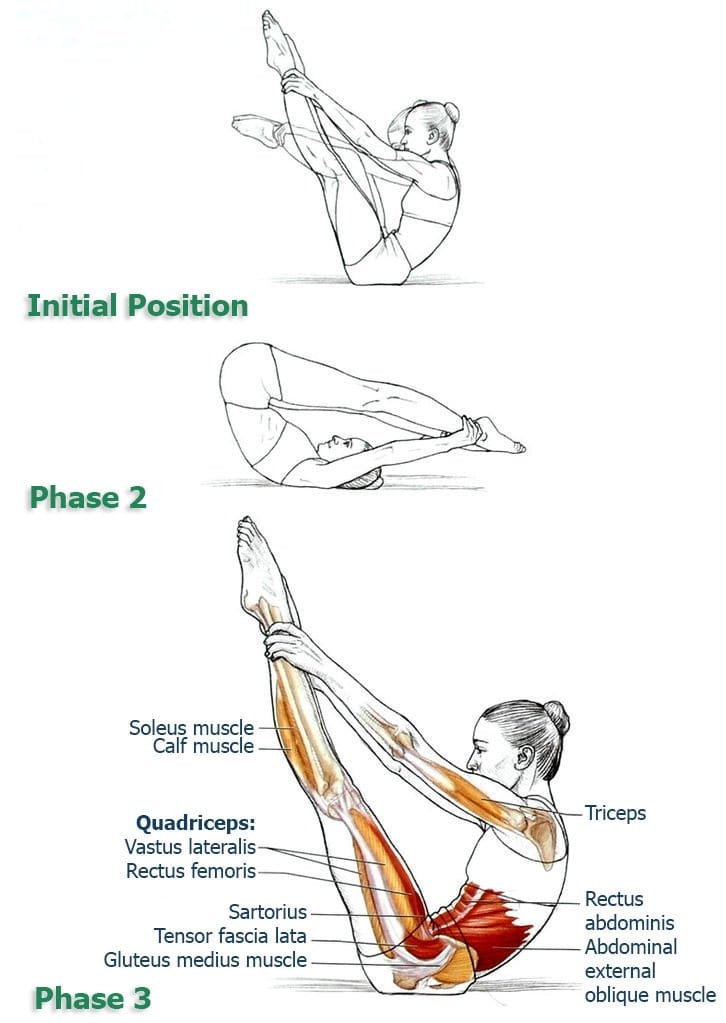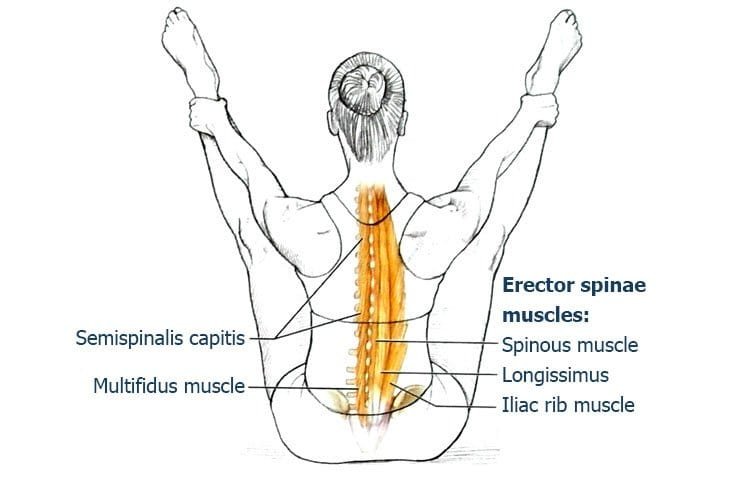Conditioning the Spine
This exercise program tries to revitalize your core muscles and joints and improve the flexibility and movement of your back by conditioning the spine. Prolonged sitting is connected with many side effects like weight gain, weak core muscles (crucial for support of the spine) and joints that have lost their flexibility and movement range. Furthermore, you increase the risk of potential spine injuries, as a consequence of accumulated daily stress, work related accidents or in traffic accidents.
Today we’ll go over one of our favourites, the Rocking Chair. Have fun!
The series so far:
- Exercise #1: Rolling Over
- Exercise #2: Seal
- Exercise #3: Crab
- Exercise #4: Rocking Chair (you are here)
- Exercise #5: Extended Legs Back Roll
- Exercise #6: Boomerang
- Exercise #7: Controlled Balance
- Exercise #8: Jackknife
Exercise #4: Rocking Chair

Initial position. Maintaining balance on the sciatic bones (your hip), pull your knees to your chest and spread them shoulder-width apart. Bend the lower part of the spine in the form of the letter “C”. Catch with your hands the tibia bone just above (or under when your legs are raised) the ankles. Straighten both legs at the knees so that they form the letter “V” along with the body:
- Breathing in, gently roll back on the mat, as shown in the illustration;
- Breathing out, roll forward and return to starting position. Repeat 5 times.
Make Sure You:
- During the 1st phase of the Rocking Chair, use the abdominal muscles to tilt the pelvis back and try avoiding sagging at the waist when the hip flexors begin to move the legs to the torso, and especially when the legs straighten the knees;
- At the beginning of the 2nd phase, give a stronger pull to your stomach and, tilting your pelvis back, roll back on the mat;
- During the return movement, do not bend your knees. The leg extensor muscles in the hip joints prevent lowering of the legs towards the chest;
- At the beginning of the 3rd phase engage the hip extensor muscles to keep the legs separate from the chest (though the hands do not allow a significant change of the angle between the torso and legs), thus helping the body to roll in the right direction. At the end of the third phase strongly bend the spine (similarly to the letter “C”) and via the abdominal muscles pull the chest down to come to the starting position, while maintaining balance;
- Hold your shoulder blades in their neutral position. Do not lift the shoulders, especially when you’re in the starting position;
- The mental image: As its name suggests, in this exercise you should image yourself as a rocking chair.
Additional Notes
The Rocking Chair exercise has long been used in Pilates. It uses many of the motor skills acquired during the previous exercises of this series, but the straightened legs add complexity. This leg position allows a good stretching of the hamstring muscles and helps develop a sense of balance.
Modifications
If you lack flexibility in the posterior group of thigh muscles, you can place your hands lower down the legs and if that is also difficult, you can slightly bend your knees and take hold of the back of the thighs.

Optional
The Rocking Chair can also be performed by straightening your back in the starting position, as shown in the figure. In this variation, the back muscles straighten the spine and the abdominal muscles keep the pelvis in a neutral position at the end of the 3rd phase. This allows you to engage the back muscles during the exercise, and provides a good balance and footing.
With the Rocking Chair we end the first half of our program, conditioning the spine and improving flexibility and movement.

